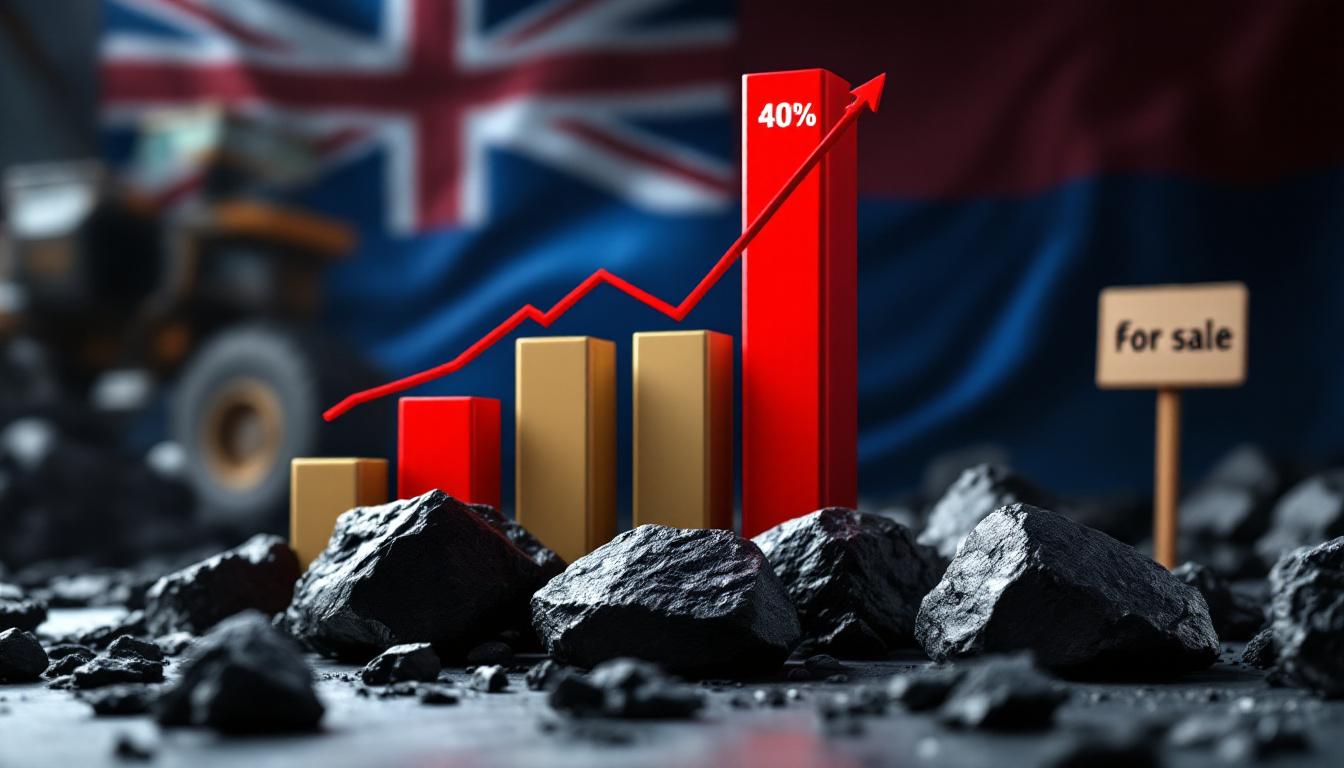Geopolitical Tensions and Monetary Policy: Impact on Global Copper Markets
Recent developments on the global stage are creating significant ripples across commodity markets, with copper emerging as a key barometer of both geopolitical sentiment and monetary policy expectations. The easing tensions between Iran and Israel alongside anticipated interest rate cuts are driving copper prices higher, creating a complex market landscape for investors and industry participants alike.
How Are Geopolitical Factors Influencing Copper Prices?
The copper market has experienced notable volatility in recent weeks, with prices reflecting shifting geopolitical dynamics that extend far beyond simple supply-demand equations.
Middle East Tensions and Market Sentiment
The recent de-escalation between Iran and Israel has significantly reduced risk aversion in commodity markets, allowing copper prices to find more stable footing. According to Shanghai Metal Market (SMM), "Trump announced that he believed the war between Israel and Iran had ended, and that the US would hold talks with Iran next week, not considering a nuclear agreement necessary" (June 26, 2025).
This diplomatic breakthrough has effectively lowered the geopolitical risk premium that had been built into copper prices, allowing more fundamental factors to reassert their influence on price discovery. Historically, copper markets typically experience a stabilization period following major geopolitical de-escalations, as traders recalibrate risk assessments and focus returns to underlying economic indicators.
Market Impact: The immediate effect of reduced tensions has been a noticeable shift in trader positioning, with risk-off hedges unwinding and allowing for more constructive price momentum.
When geopolitical tensions subside, copper typically benefits not only from reduced risk premiums but also from improved sentiment regarding global industrial activity and trade flows – critical factors for a metal deeply embedded in global manufacturing and infrastructure development.
Supply Chain Security Concerns
Despite the recent diplomatic progress, smelter shutdown impact and supply chain security remains a persistent concern for copper market participants. The Strait of Hormuz continues to represent a critical chokepoint for global metal supply chains, with significant volumes of copper concentrate and refined metal transiting this waterway annually.
During periods of heightened regional tensions, shipping costs through vulnerable corridors can increase substantially, with insurance premiums, security surcharges, and alternative routing all contributing to higher delivered costs. These logistical challenges can create temporary disconnects between different regional markets, affecting physical premiums and prompting inventory shifts.
The current easing of tensions has begun to normalize these logistics risk premiums, contributing to more consistent pricing across global trading hubs. However, market participants remain vigilant about potential disruptions, maintaining contingency plans for supply chain reconfiguration should tensions reignite.
What's Driving the Current Copper Price Rally?
Beyond geopolitical factors, several key drivers are converging to support copper's upward price trajectory.
Federal Reserve Policy Expectations
The copper market is demonstrating heightened sensitivity to anticipated shifts in U.S. monetary policy. According to SMM, "The market widely expects the US Fed to soon resume its interest rate cut cycle, with the US dollar index falling, supporting copper prices" (June 26, 2025).
This expectation has multiple implications for copper:
- Dollar weakness: As a dollar-denominated commodity, copper becomes more affordable for buyers holding other currencies when the dollar weakens
- Economic stimulus: Rate cuts typically aim to stimulate economic activity, potentially increasing industrial demand for copper
- Investment flows: Lower rates reduce the opportunity cost of holding non-yielding assets like commodities
- Funding costs: Cheaper financing reduces carrying costs for metal inventories and development projects
The correlation between dollar weakness and copper strength has been particularly pronounced in recent trading sessions, with copper gaining momentum as currency markets price in more dovish Fed positioning.
Fundamental Supply-Demand Dynamics
Beyond monetary policy, copper's rally is finding support from tightening physical market conditions. SMM notes that "most enterprises have gradually completed their inventory clearance plans, with limited marketable supply currently available" (June 26, 2025).
This inventory situation marks a significant shift from earlier periods of destocking:
- Downstream fabricators have largely worked through excess inventory positions
- Trading company warehouses report declining available tonnages
- Exchange-registered inventories remain below historical averages
- Spot market participants report increasing difficulty securing material for prompt delivery
The scarcity premium is becoming evident in physical market transactions, with SMM reporting that "prices for some scarce supplies will rise" as buyers compete for available material. This fundamental tightness provides a solid foundation for continued price strength, particularly if combined with seasonal demand patterns that typically accelerate in the second half of the year.
How Are Global Copper Exchanges Responding?
The world's major copper exchanges are reflecting these changing dynamics through price action and trading patterns.
London Metal Exchange (LME) Performance
The most recent LME copper session demonstrated meaningful upward momentum, with prices advancing despite initial fluctuations. Key metrics from the session include:
- Opening price: $9,692.50/mt
- Intraday high: $9,738.00/mt
- Session low: $9,684.00/mt
- Closing price: $9,727.00/mt (representing a 0.65% gain)
- Trading volume: 14,874 lots
- Open interest: 286,436 lots
According to SMM, the "overall trend fluctuated initially before fluctuating upward," with particular strength emerging in the latter portion of the trading session. This price pattern suggests increasing confidence among traders as the session progressed, with buyers willing to step in at progressively higher levels.
Shanghai Futures Exchange (SHFE) Activity
The SHFE copper market displayed similar strength, though with slightly different intraday dynamics:
- Opening price for the 2508 contract: 78,600 yuan/mt
- Session high: 78,740 yuan/mt
- Session low: 78,510 yuan/mt
- Closing price: 78,720 yuan/mt (up 0.36%)
- Trading volume: 25,683 lots
- Open interest: 175,229 lots
SMM characterized the SHFE action as a "fluctuating upward trend" that included an initial surge, mid-session pullback, and late recovery. This pattern often indicates healthy two-way flow with ultimately greater buying pressure, typically considered constructive for continued upward momentum.
The alignment between LME and SHFE price action suggests global consensus regarding copper's direction, with both markets responding to similar fundamental and macroeconomic drivers despite their different trading hours and participant bases.
What Technical Indicators Are Suggesting About Copper's Direction?
Technical analysis provides valuable additional context for understanding copper's recent performance and potential future direction.
Price Support and Resistance Levels
Current price action has established important technical parameters that traders are closely monitoring:
- Support levels: Recent trading has established support around $9,680/mt on the LME and 78,500 yuan/mt on SHFE
- Resistance levels: Overhead resistance appears at approximately $9,750/mt and 79,000 yuan/mt respectively
- Moving averages: Both markets are trading above key moving averages, with the 50-day MA crossing above the 100-day MA, generating a bullish signal
- Volume patterns: Trading volume has been notably higher during price advances than during consolidations, suggesting stronger conviction among buyers than sellers
These technical factors combine to create a constructive backdrop for copper prices, with solid support beneath current levels and the potential for testing higher resistance points if bullish momentum continues.
Market Sentiment Indicators
Beyond price and volume patterns, other technical indicators provide insight into market sentiment:
- The contango structure (future prices higher than spot) has been narrowing, suggesting tightening physical supply conditions
- Options market activity shows increased call buying, indicating bullish sentiment among derivatives traders
- Open interest has expanded during the recent price advance, suggesting new positions being established rather than simply short covering
- Momentum indicators like the Relative Strength Index (RSI) show strengthening but not yet overbought conditions
These sentiment measures generally align with the price action, reinforcing the impression of a market finding increasingly solid footing for potential further advances.
How Are Macroeconomic Factors Affecting Copper Markets?
Copper's reputation as a macroeconomic barometer – earning it the nickname "Dr. Copper" for its supposed ability to diagnose economic conditions – makes the metal particularly sensitive to broader economic developments.
Global Economic Outlook
The anticipated shift in monetary policy comes at a critical juncture for the global economy:
- Manufacturing sectors in key economies have shown signs of stabilization after earlier weakness
- Infrastructure investment remains a priority for governments seeking to stimulate economic activity
- Supply chain resilience initiatives continue to drive reshoring and friend-shoring of industrial capacity
- Energy transition investments are accelerating, creating substantial surging copper demand
The interest rate cut expectations that are currently supporting copper prices typically indicate central bank concern about economic growth, creating something of a paradox – copper benefits from the monetary stimulus effect while potentially facing headwinds from the underlying economic weakness that prompted the policy shift.
However, current market behavior suggests traders are emphasizing the stimulus impact over growth concerns, particularly given the relatively resilient economic indicators in major copper-consuming regions.
Currency Market Dynamics
The dollar's recent weakness represents a significant tailwind for copper prices. As SMM notes, "with the US dollar falling significantly, copper prices are expected to be supported" (June 26, 2025).
This currency effect operates through several channels:
- Purchasing power: Non-dollar buyers find copper more affordable when the dollar weakens
- Production economics: Mining operations with costs in non-dollar currencies see margin improvements
- Investment flows: Dollar weakness often correlates with increased commodity allocation from investment funds
- Emerging market demand: Strengthening emerging market currencies can boost copper consumption in developing economies, which account for a significant portion of global demand growth
The historical correlation between dollar cycles and commodity super-cycles highlights the importance of currency dynamics for copper's medium to long-term outlook, making current dollar weakness a particularly noteworthy development.
What Are the Supply-Side Factors Affecting Copper Markets?
While demand and macroeconomic factors have dominated recent market commentary, supply-side dynamics continue to play a crucial role in copper's structural outlook.
Production Constraints
The global copper supply forecast indicates that the mining industry faces numerous challenges that affect production capacity and efficiency:
- Grade degradation: Many mature mining operations are experiencing declining ore grades, requiring more material to be processed for the same metal output
- Operational disruptions: Labor actions, weather events, and equipment failures have affected production at several major mines
- Regulatory hurdles: Environmental and social permitting requirements have extended development timelines for new projects
- Technical complexity: Remaining undeveloped deposits often present greater extraction challenges than historical operations
These factors contribute to a relatively constrained supply response capability, even when prices rise to levels that would traditionally incentivize production increases. The mining industry's structural challenges mean that supply elasticity has decreased compared to previous cycles.
Inventory Levels
Current copper inventory metrics underscore the market's tightness:
- Visible exchange inventories remain near multi-year lows
- SMM reports that "most enterprises have gradually completed their inventory clearance plans, with limited marketable supply currently available"
- Inventory-to-consumption ratios have trended below historical averages
- Strategic stockpiling by both national entities and industrial users has absorbed additional material
This inventory situation leaves the market more vulnerable to supply disruptions and potentially more responsive to demand increases, creating a fundamental backdrop conducive to price volatility and potential upside.
What's the Outlook for Copper Prices?
Synthesizing the geopolitical, monetary, technical, and fundamental factors affecting copper markets provides a framework for understanding potential price trajectories.
Near-Term Price Projections
The immediate outlook appears constructive, with SMM stating that "with the US dollar falling significantly, copper prices are expected to be supported today" (June 26, 2025).
Several factors support this positive near-term view:
- Continued dollar weakness provides ongoing price support
- Technical momentum indicators suggest potential for testing higher resistance levels
- Limited physical availability creates support from fundamental market participants
- Seasonal demand patterns typically strengthen in the coming months
The convergence of these factors creates a favorable environment for copper price prediction, though market participants remain alert to potential volatility from either geopolitical developments or shifts in monetary policy expectations.
Long-Term Market Fundamentals
Beyond near-term dynamics, copper's structural outlook continues to be shaped by the intersection of energy transition demands and production constraints:
- Electrification trends: Electric vehicle production growth requires approximately 40-80kg of copper per vehicle, compared to 20kg for conventional vehicles
- Renewable energy: Wind and solar installations consume 4-6 times more copper than traditional power generation per megawatt
- Grid infrastructure: Power distribution networks require substantial upgrading to handle renewable generation and increased electricity demand
- Production challenges: New mining projects face extended development timelines due to permitting complexities and capital constraints
These structural factors suggest a potentially supportive long-term environment for copper prices, though with significant cyclical fluctuations driven by economic conditions and policy shifts.
FAQs About Copper Market Dynamics
How do geopolitical tensions typically impact copper prices?
Geopolitical tensions affect copper prices primarily through risk premiums related to supply disruptions, shipping route security, and overall market sentiment. During heightened tension periods, prices often incorporate a premium to account for potential supply chain disruptions, particularly when tensions involve major copper-producing regions or key shipping routes.
The recent de-escalation between Iran and Israel provides a clear example of this dynamic, with SMM reporting that Trump's announcement regarding potential US-Iran talks "eased market risk-aversion sentiment," allowing copper prices to respond more directly to fundamental factors.
What is the relationship between interest rates and copper prices?
Interest rates impact copper prices through multiple channels:
- Economic growth: Lower rates typically stimulate economic activity, increasing industrial demand for copper
- Dollar strength: Rate cuts often weaken the US dollar, making dollar-denominated copper more affordable globally
- Financing costs: Lower rates reduce the cost of carrying inventories and developing mining projects
- Investment allocation: In low-rate environments, commodities often attract increased investment as alternatives to lower-yielding financial assets
The current market expectation that "the US Fed [will] soon resume its interest rate cut cycle" (SMM, June 26, 2025) exemplifies how monetary policy anticipation directly influences copper price action, with traders positioning ahead of the expected policy shift.
How significant is the Strait of Hormuz for global copper supply chains?
The Strait of Hormuz represents a critical chokepoint for global commodity shipping, including significant copper concentrate and refined metal volumes. Regional tensions can affect shipping costs, insurance premiums, and delivery timelines for copper market participants.
While the recent de-escalation has reduced immediate concerns, the strait's strategic importance remains a persistent factor in supply chain risk assessments. Disruptions in this region can have cascading effects throughout global copper supply networks, particularly for Asian consumers relying on Middle Eastern and African copper sources.
Further Exploration:
Readers seeking deeper insights into copper market dynamics can explore additional resources from industry analysts, exchange reports, and specialized commodities research providers. Shanghai Metal Market (SMM) offers regular analysis of these markets, with particular strength in Asian market coverage.
For investors and industry participants, maintaining awareness of both geopolitical developments and monetary policy shifts remains essential, as these factors continue to exert significant influence on copper's price trajectory alongside traditional supply-demand fundamentals. Those interested in unlocking copper opportunities should closely monitor these interrelated market drivers.
Wondering How to Capitalise on the Next Major Mineral Discovery?
Discovery Alert's proprietary Discovery IQ model instantly notifies investors of significant ASX mineral discoveries, transforming complex data into actionable insights for both copper and other commodities. Understand why historic discoveries can generate substantial returns by visiting Discovery Alert's dedicated discoveries page and position yourself ahead of the market.




